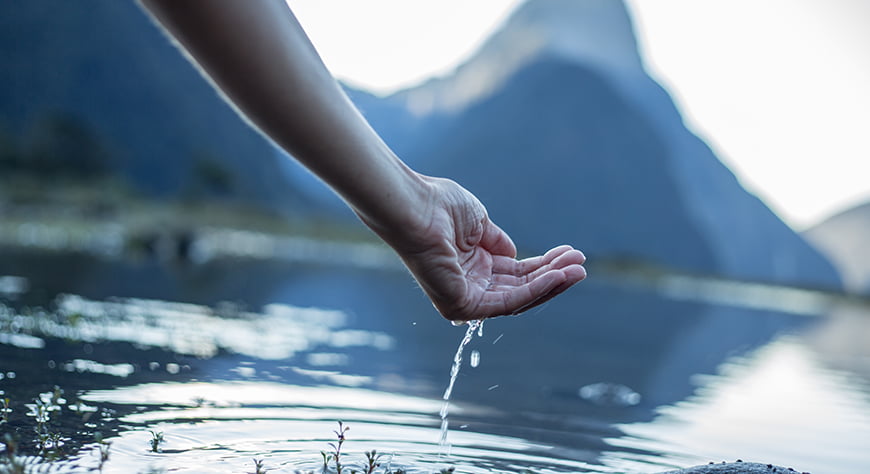
Solving 21st Century Water Challenges
World Water Day 2018 arrives in the middle of droughts and floods around the world. There’s no better time to think about our collective water solutions and how we intend to meet the new and increasing water challenges of the 21st century.
Nature for water is the theme of this year’s World Water Day. With so many of the world’s current water problems rooted in a misuse or destruction of natural systems through climate change, a restoration and replication of ecosystem functions is key to bringing resiliency back to the world’s water supplies.
Ontario’s WaterTAP recently highlighted one of Tomlinson’s Environmental Services companies – Lystek International and its innovative technology in a report entitled, “Water: The next frontier on the path to a low carbon economy”. The Lystek technology turns wastewater residuals into LysteGro®, a commercial biofertilizer, putting an otherwise inconvenient product to good use in protecting the environment. The LysteGro process saves an estimated 12,000 tonnes of greenhouse gas emissions over conventional fertilizer production per facility. In the U.S., 165,000 water and wastewater facilities account for 4 per cent of the country’s electricity use, meaning that technologies and processes which reduce water treatment’s carbon footprint can have a significant impact on overall national emissions.
Water resources are also closely tied to clean energy technologies, with Wastewater Treatment Plants now being converted into Wastewater Resource Recovery Centers. The difference is in the understanding of wastewater as an asset and opportunity. Using this approach, Lystek projects in places like Fairfield-Suisun, in California, are improving biogas production capacity while reducing wastewater outputs.
Where water and wastewater are being used effectively, they are not contributing to the run-off of nutrients into drinking water resources. Biofertilizers strengthen soils, aiding their ability to retain water and resist erosion. Between 25-40 billion tonnes of topsoil erode from dry croplands every year – a problem made much worse by climate change-induced droughts. Cleaner wastewater reduces the volume of nutrients washing into lakes and rivers and the soils themselves help to prevent further contamination. These are the layers of resilience needed to address the myriad water-related challenges of climate change.
The natural water cycle sees nutrients from the soil returned to nature in ways that retain a balance between all the organisms in the ecosystem. Modern wastewater treatment has ignored this harmony, flushing high concentrations of nutrients and pathogens into waterways – upsetting and overwhelming the natural equilibrium. Flooding brought on by climate change exacerbates this problem. If properly understood as a valuable resource, wastewater is used to reinvigorate soils and return nutrients to where they are needed. Projects like Lystek’s resource recovery upgrade in St. Thomas, Ontario focus on capturing the value in wastewater and leveraging it for environmental and economic benefit.
Scientists and advocacy groups are now calling for Low-Impact Development (LID) to replace outdated forms of infrastructure. LID is a design principle that looks to treat and manage water as close to its source as possible. “Slow it down, soak it up, keep it clean” is the motto which drives efforts to absorb stormwater before it washes pollutants into water supplies. New, innovative forms of wastewater management are of a piece with this principle, efficiently managing stormwater in a way that maximizes the value of the resource and puts it back where it can again support healthy ecosystems.
In some ways, 21st century water innovation is about rediscovering what nature already understood: The best solutions have multiple benefits which improve an ecosystem’s ability to withstand spikes and fluctuations brought on by climate change. Across the world, innovative municipalities are finding greenhouse gas reductions and economic benefits from valuing water. Lystek is glad to be contributing to these adaptive solutions designed to meet the world’s newest water challenges.
Happy World Water Day!
—
About Tomlinson Group of Companies
Ralph Tomlinson founded R.W. Tomlinson Cartage in 1952 with one single-axle dump truck. Now celebrating 65 years, the company is now Eastern Canada’s leader in environmental and transportation infrastructure services. Providing a comprehensive range of products and services in quarrying, construction, trucking and environmental industries, Tomlinson continuously strives to deliver the highest standard of quality and value to its customers, partners and employees. Investment in its communities, people, processes, resources and equipment has earned Tomlinson a reputation for excellence, integrity, innovation and teamwork. For more information, please visit www.tomlinsongroup.com.
About Lystek International
Lystek International Inc. is a leading provider of Thermal Hydrolysis solutions for the sustainable management of biosolids and organics. The multi-use, award-winning Lystek system reduces costs, volumes and GHG’s by converting municipal and industrial wastewater treatment facilities into resource recovery centers. This is achieved by transforming organic waste streams into value-added products and services, such as the patented LysteMize® process for optimizing digester performance, reducing volumes and increasing biogas production; LysteGro®, a high-value, nutrient-rich biofertilizer and LysteCarb®, an alternative source of carbon for BNR systems. For more information, please visit www.lystek.com.
For more information, please contact Kevin Litwiller, Director of Marketing & Communications
Cell: 519.584.5437 | Office: 226.444.0186 x 106 | kevinl@lystek.com
